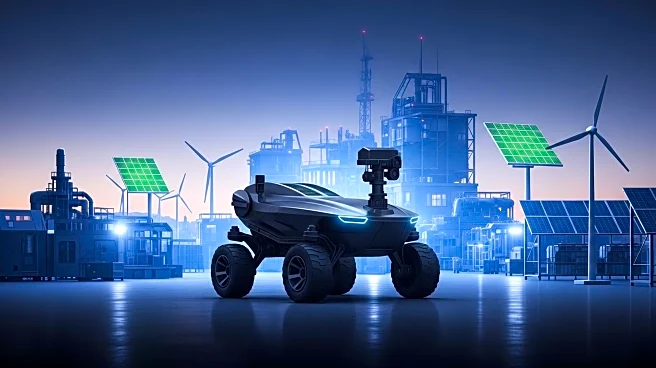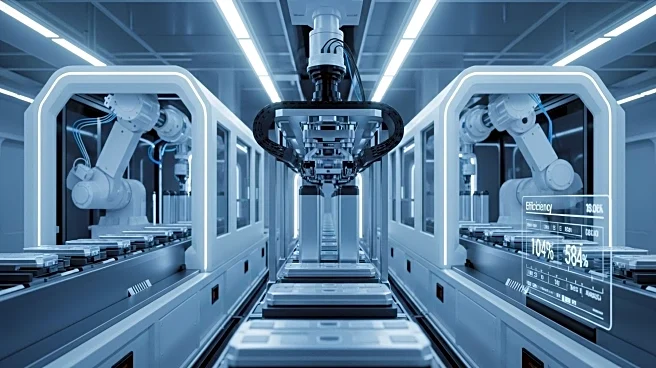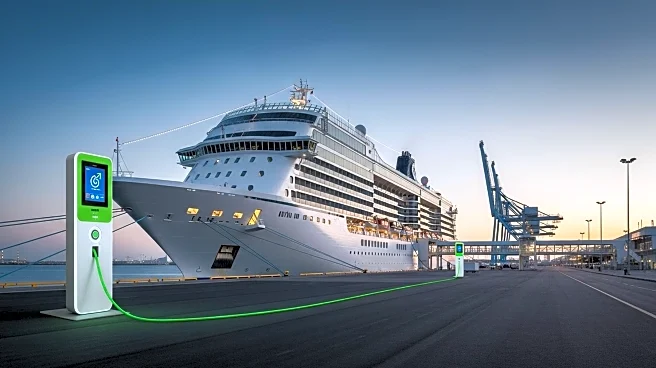What's Happening?
Researchers at the University of Maryland have developed a new type of environmentally friendly electronic circuit board that can dissolve in water, facilitating easier recycling. The boards are made using polyvinyl alcohol, a polymer that dissolves in water, and a gallium-indium metal alloy for wiring. Once assembled, the boards can be used in devices like Bluetooth speakers and electronic grippers. When exposed to warm water, the boards dissolve, allowing for the safe recycling of components and materials. This innovation addresses the significant issue of electronic waste, particularly circuit boards, which are often difficult to recycle. According to a United Nations report, Asian countries generate around 600,000 tons of used circuit boards annually, with less than 20% being recycled. In contrast, the EU and North America recycle 61% and 44% of their circuit board waste, respectively.
Why It's Important?
The development of water-soluble 3-D printed electronics represents a significant advancement in reducing electronic waste, a growing environmental concern. Circuit boards are a major component of electronic waste, and their recycling is often challenging due to the materials used. By creating boards that can dissolve in water, researchers offer a sustainable solution that could significantly increase recycling rates. This innovation could lead to a reduction in the environmental impact of electronic waste, particularly in regions with low recycling rates. It also highlights the potential for 3-D printing technology to contribute to sustainable manufacturing practices, offering a model for other industries to follow.
What's Next?
The next steps for this technology could involve scaling up production and testing the durability and performance of these water-soluble circuit boards in more complex electronic devices. Researchers may also explore partnerships with electronics manufacturers to integrate this technology into commercial products. Additionally, regulatory bodies might consider updating recycling guidelines to accommodate these new materials, potentially leading to broader adoption and increased recycling rates. The success of this technology could inspire further research into biodegradable materials for electronics, driving innovation in sustainable manufacturing.
Beyond the Headlines
This development could have broader implications for the electronics industry, potentially leading to a shift towards more sustainable production practices. The use of biodegradable materials in electronics could reduce the industry's reliance on non-renewable resources and decrease its environmental footprint. Furthermore, this innovation may prompt discussions on the ethical responsibility of manufacturers to address electronic waste and its impact on the environment. As consumers become more environmentally conscious, demand for sustainable products may increase, influencing market trends and encouraging companies to adopt greener practices.











